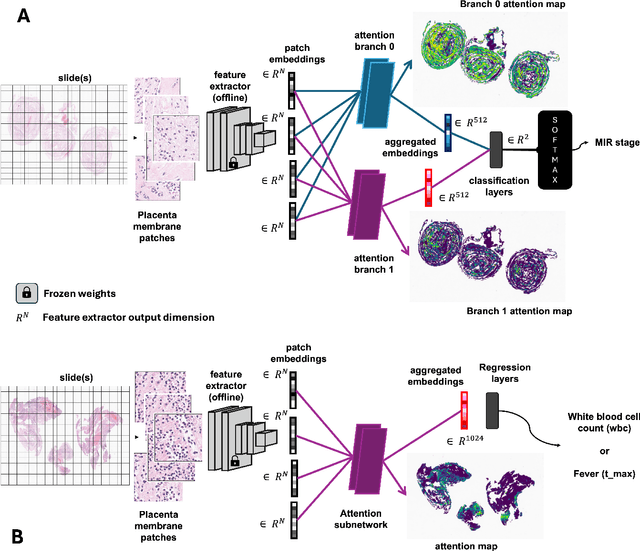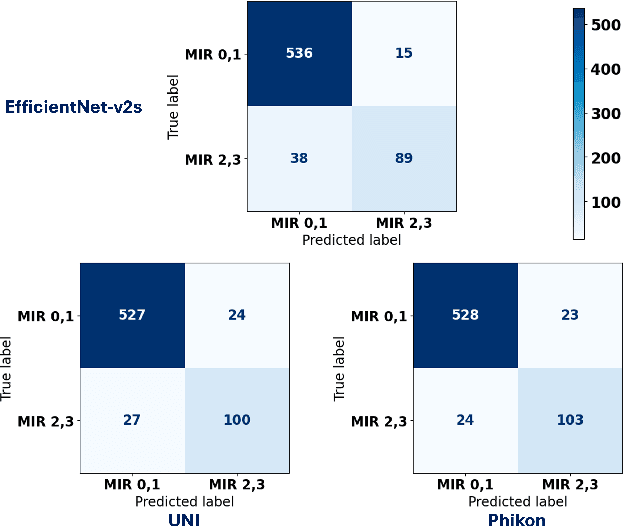Jeffery A. Goldstein
Reading a Ruler in the Wild
Jul 09, 2025Abstract:Accurately converting pixel measurements into absolute real-world dimensions remains a fundamental challenge in computer vision and limits progress in key applications such as biomedicine, forensics, nutritional analysis, and e-commerce. We introduce RulerNet, a deep learning framework that robustly infers scale "in the wild" by reformulating ruler reading as a unified keypoint-detection problem and by representing the ruler with geometric-progression parameters that are invariant to perspective transformations. Unlike traditional methods that rely on handcrafted thresholds or rigid, ruler-specific pipelines, RulerNet directly localizes centimeter marks using a distortion-invariant annotation and training strategy, enabling strong generalization across diverse ruler types and imaging conditions while mitigating data scarcity. We also present a scalable synthetic-data pipeline that combines graphics-based ruler generation with ControlNet to add photorealistic context, greatly increasing training diversity and improving performance. To further enhance robustness and efficiency, we propose DeepGP, a lightweight feed-forward network that regresses geometric-progression parameters from noisy marks and eliminates iterative optimization, enabling real-time scale estimation on mobile or edge devices. Experiments show that RulerNet delivers accurate, consistent, and efficient scale estimates under challenging real-world conditions. These results underscore its utility as a generalizable measurement tool and its potential for integration with other vision components for automated, scale-aware analysis in high-impact domains. A live demo is available at https://huggingface.co/spaces/ymp5078/RulerNet-Demo.
S2S2: Semantic Stacking for Robust Semantic Segmentation in Medical Imaging
Dec 17, 2024



Abstract:Robustness and generalizability in medical image segmentation are often hindered by scarcity and limited diversity of training data, which stands in contrast to the variability encountered during inference. While conventional strategies -- such as domain-specific augmentation, specialized architectures, and tailored training procedures -- can alleviate these issues, they depend on the availability and reliability of domain knowledge. When such knowledge is unavailable, misleading, or improperly applied, performance may deteriorate. In response, we introduce a novel, domain-agnostic, add-on, and data-driven strategy inspired by image stacking in image denoising. Termed ``semantic stacking,'' our method estimates a denoised semantic representation that complements the conventional segmentation loss during training. This method does not depend on domain-specific assumptions, making it broadly applicable across diverse image modalities, model architectures, and augmentation techniques. Through extensive experiments, we validate the superiority of our approach in improving segmentation performance under diverse conditions. Code is available at https://github.com/ymp5078/Semantic-Stacking.
Deep Learning for Fetal Inflammatory Response Diagnosis in the Umbilical Cord
Nov 14, 2024



Abstract:Inflammation of the umbilical cord can be seen as a result of ascending intrauterine infection or other inflammatory stimuli. Acute fetal inflammatory response (FIR) is characterized by infiltration of the umbilical cord by fetal neutrophils, and can be associated with neonatal sepsis or fetal inflammatory response syndrome. Recent advances in deep learning in digital pathology have demonstrated favorable performance across a wide range of clinical tasks, such as diagnosis and prognosis. In this study we classified FIR from whole slide images (WSI). We digitized 4100 histological slides of umbilical cord stained with hematoxylin and eosin(H&E) and extracted placental diagnoses from the electronic health record. We build models using attention-based whole slide learning models. We compared strategies between features extracted by a model (ConvNeXtXLarge) pretrained on non-medical images (ImageNet), and one pretrained using histopathology images (UNI). We trained multiple iterations of each model and combined them into an ensemble. The predictions from the ensemble of models trained using UNI achieved an overall balanced accuracy of 0.836 on the test dataset. In comparison, the ensembled predictions using ConvNeXtXLarge had a lower balanced accuracy of 0.7209. Heatmaps generated from top accuracy model appropriately highlighted arteritis in cases of FIR 2. In FIR 1, the highest performing model assigned high attention to areas of activated-appearing stroma in Wharton's Jelly. However, other high-performing models assigned attention to umbilical vessels. We developed models for diagnosis of FIR from placental histology images, helping reduce interobserver variability among pathologists. Future work may examine the utility of these models for identifying infants at risk of systemic inflammatory response or early onset neonatal sepsis.
Machine learning identification of maternal inflammatory response and histologic choroamnionitis from placental membrane whole slide images
Nov 04, 2024



Abstract:The placenta forms a critical barrier to infection through pregnancy, labor and, delivery. Inflammatory processes in the placenta have short-term, and long-term consequences for offspring health. Digital pathology and machine learning can play an important role in understanding placental inflammation, and there have been very few investigations into methods for predicting and understanding Maternal Inflammatory Response (MIR). This work intends to investigate the potential of using machine learning to understand MIR based on whole slide images (WSI), and establish early benchmarks. To that end, we use Multiple Instance Learning framework with 3 feature extractors: ImageNet-based EfficientNet-v2s, and 2 histopathology foundation models, UNI and Phikon to investigate predictability of MIR stage from histopathology WSIs. We also interpret predictions from these models using the learned attention maps from these models. We also use the MIL framework for predicting white blood cells count (WBC) and maximum fever temperature ($T_{max}$). Attention-based MIL models are able to classify MIR with a balanced accuracy of up to 88.5% with a Cohen's Kappa ($\kappa$) of up to 0.772. Furthermore, we found that the pathology foundation models (UNI and Phikon) are both able to achieve higher performance with balanced accuracy and $\kappa$, compared to ImageNet-based feature extractor (EfficientNet-v2s). For WBC and $T_{max}$ prediction, we found mild correlation between actual values and those predicted from histopathology WSIs. We used MIL framework for predicting MIR stage from WSIs, and compared effectiveness of foundation models as feature extractors, with that of an ImageNet-based model. We further investigated model failure cases and found them to be either edge cases prone to interobserver variability, examples of pathologist's overreach, or mislabeled due to processing errors.
AI-SAM: Automatic and Interactive Segment Anything Model
Dec 05, 2023



Abstract:Semantic segmentation is a core task in computer vision. Existing methods are generally divided into two categories: automatic and interactive. Interactive approaches, exemplified by the Segment Anything Model (SAM), have shown promise as pre-trained models. However, current adaptation strategies for these models tend to lean towards either automatic or interactive approaches. Interactive methods depend on prompts user input to operate, while automatic ones bypass the interactive promptability entirely. Addressing these limitations, we introduce a novel paradigm and its first model: the Automatic and Interactive Segment Anything Model (AI-SAM). In this paradigm, we conduct a comprehensive analysis of prompt quality and introduce the pioneering Automatic and Interactive Prompter (AI-Prompter) that automatically generates initial point prompts while accepting additional user inputs. Our experimental results demonstrate AI-SAM's effectiveness in the automatic setting, achieving state-of-the-art performance. Significantly, it offers the flexibility to incorporate additional user prompts, thereby further enhancing its performance. The project page is available at https://github.com/ymp5078/AI-SAM.
 Add to Chrome
Add to Chrome Add to Firefox
Add to Firefox Add to Edge
Add to Edge